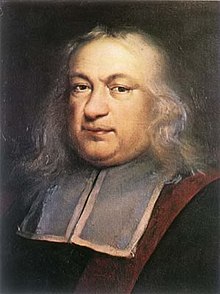Pierre Fermat
| Pierre de Fermat | |
|---|---|
 |
|
| Born | Between 31 October - 6 December 1607 Beaumont-de-Lomagne, France |
| Died | 12 January 1665 (aged 57) Castres, France |
| Fields | Mathematics and law |
| Alma mater |
University of Orléans (LL.B., 1626) |
| Known for | Contributions to number theory, analytic geometry, probability theory Fermat's principle Fermat's little theorem Fermat's Last Theorem Adequality Fermat's "difference quotient" method (See full list) |
| Influences | François Viète, Gerolamo Cardano, Diophantus |
Pierre de Fermat (French: [pjɛːʁ də fɛʁma]; (Between 31 October and 6 December 1607 – 12 January 1665) was a French lawyer at the Parlement of Toulouse, France, and a mathematician who is given credit for early developments that led to infinitesimal calculus, including his technique of adequality. In particular, he is recognized for his discovery of an original method of finding the greatest and the smallest ordinates of curved lines, which is analogous to that of differential calculus, then unknown, and his research into number theory. He made notable contributions to analytic geometry, probability, and optics. He is best known for his Fermat's principle for light propagation and his Fermat's Last Theorem in number theory, which he described in a note at the margin of a copy of Diophantus' Arithmetica.
Fermat was born in the first decade of the 17th century in Beaumont-de-Lomagne, France—the late 15th-century mansion where Fermat was born is now a museum. He was from Gascony, where his father, Dominique Fermat, was a wealthy leather merchant, and served three one-year terms as one of the four consuls of Beaumont-de-Lomagne. His mother was Françoise Cazeneuve. Pierre had one brother and two sisters and was almost certainly brought up in the town of his birth. There is little evidence concerning his school education, but it was probably at the Collège de Navarre in Montauban.
...
Wikipedia
